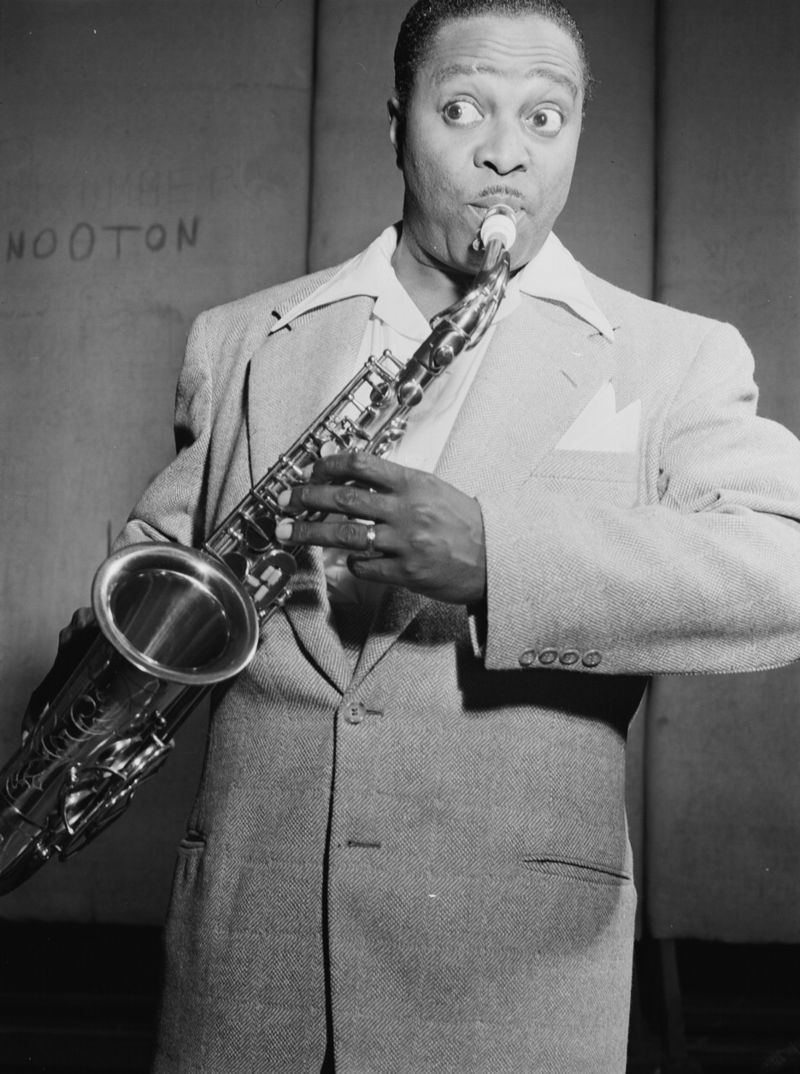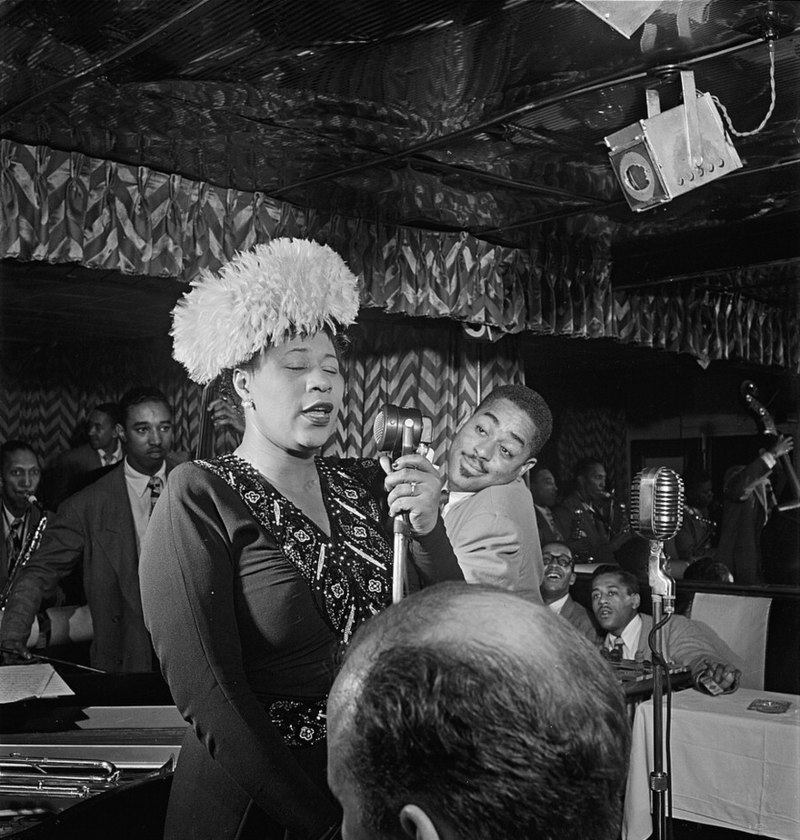
Styles: Jump Blues (aka Boogie-Woogie) 1
If the club blues style conjured up classy, intimate settings where one could relax and unwind after a long, hard day, jump blues or boogie-woogie sounded the call for those looking for music that excited one to dance and party. Louis Jordan and His Tympany Five (which did not include the tympany instrument and never numbered five) virtually created and defined this style. Tympany Five, who first recorded in 1939, were a scaled-down version of the more blues-oriented swing bands such as Chick Webb, Count Basie, and Jimmie Lunceford. Jordan was an alumnus of the Webb ensemble where he had sung opposite Ella Fitzgerald and where his exuberance as a performer had often stood out. An example of his scaled-down band (saxophone, trumpet, piano, bass, and drums) is seen and heard in the song "Down, Down, Down".

Louis JORDAN & His Tympany Band " Down , Down , Down " !!! [ 00:00-00:00 ]
The need for a scaled-down band that played in the manner of big bands was due to the slowly diminishing big bands during World War II. One reason for this is that clubs could no longer financially sustain its business with American soldiers, men and women, away at war, and consequently were unable to fill their rooms with people as well as afford large bands. As imagined, for those that did survive, it was not cost-effective to hire large bands. With similar instrumentation to big bands, smaller bands proved to be a way around this. For instance, a typical big band in the 1940s included four sections (and five if a vocalist is present): four to five trumpets; four to five trombones; five to six woodwinds; and a rhythm section of piano, guitar, bass, and drums. Total band sizes ranged from seventeen to twenty members. Smaller bands maintained these four sections, but had a saxophonist, who often sings as well, one trumpet, maybe a trombone, and a four-piece rhythm section. Regarded as a combo, total band sizes were in the range of six or seven members.
Drawing on the big band tradition, the jump blues style, now played by jump bands, borrowed from a swing sense of showmanship (including choreographed movements by the horn players) and the concept of creating prearranged riffs (melodic and/or harmonic rhythmic repetitive patterns) that would be played simultaneously by several members of the ensemble. The use of repeated one or two-bar riffs Melodic and/or harmonic rhythmic repetitive patterns). most often played by a horn section, but theoretically played by any combination of instruments, was an important organizing compositional characteristic of jump blues (and bar band blues, which will be discussed later) and was also often sounded by voices singing "vocables" in doo wop. It was not uncommon for recordings to have two or more different sets of riffs to accompany the verses and/or choruses and to have a separate riff section unto itself which, while instrumental, did not consist of an improvised solo, but was simply comprised of various band members playing a typically syncopated riff over and over through the duration of a twelve-bar section.
Sh-Boom
Oh, life could be a dream
(Sh-boom)
If I could take you up in paradise up above
(Sh-boom)
If you would tell me I'm the only one that you love
Life could be a dream, sweetheart
Sweet Lorraine
Just found joy
I'm as happy as a baby boy,
baby boy
With another brand new
choo-choo choy
When I met my sweet Lorraine, Lorraine, Lorraine







